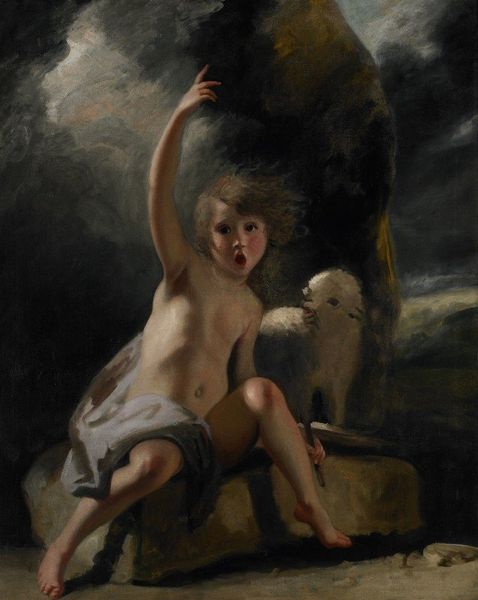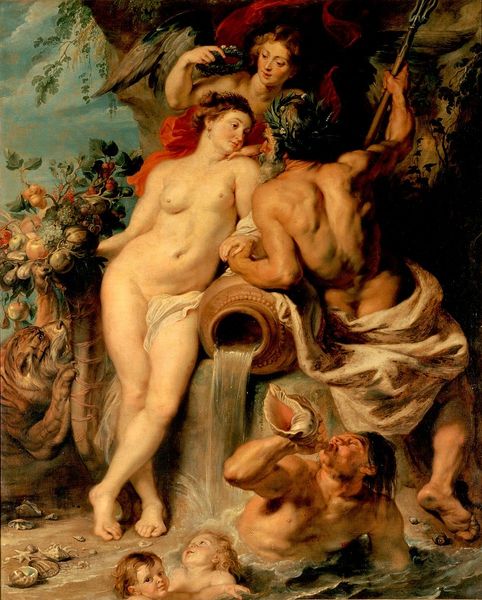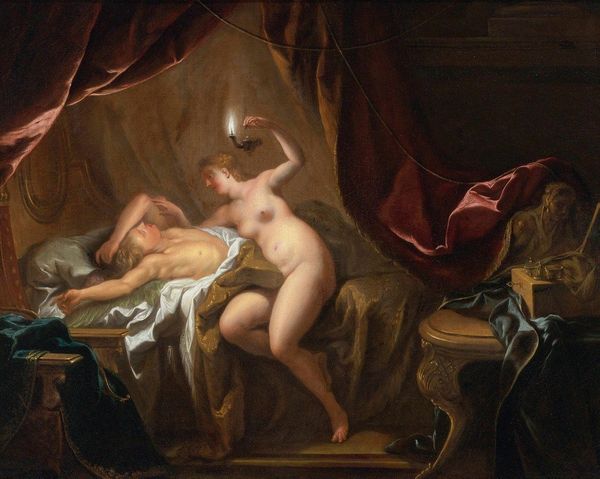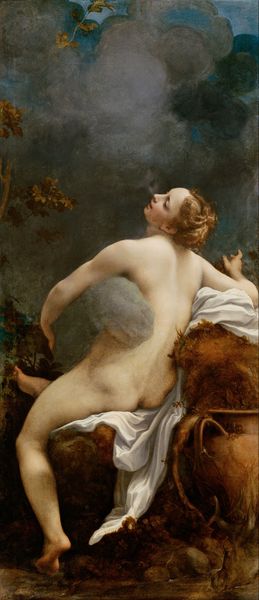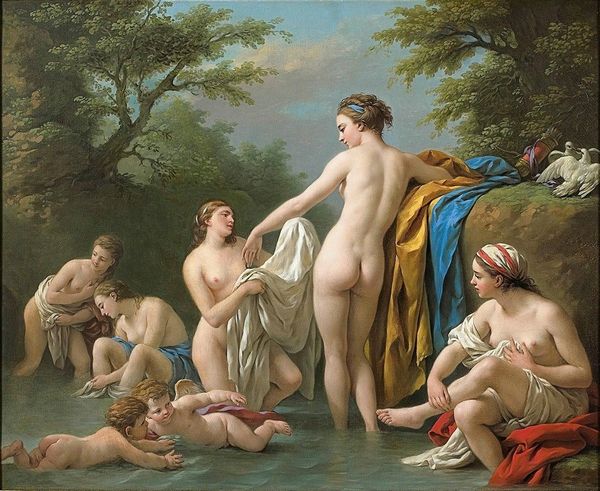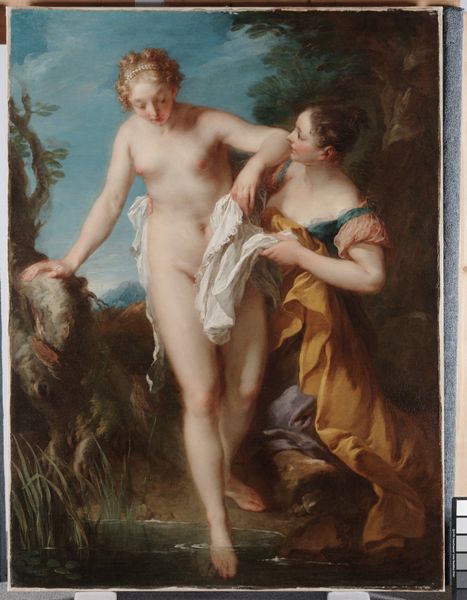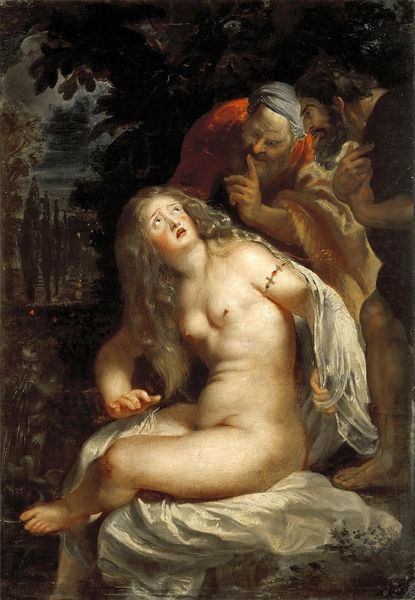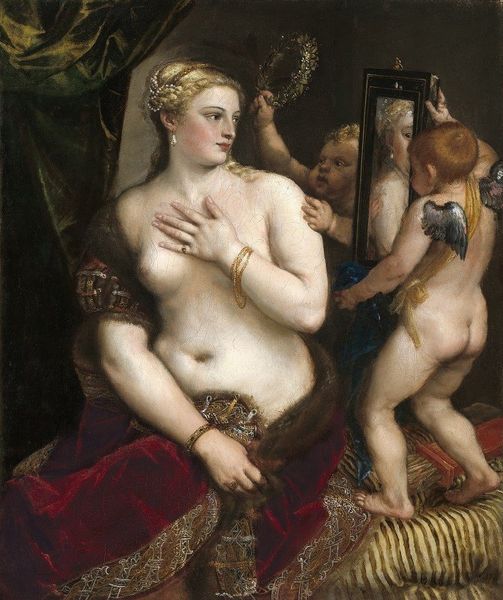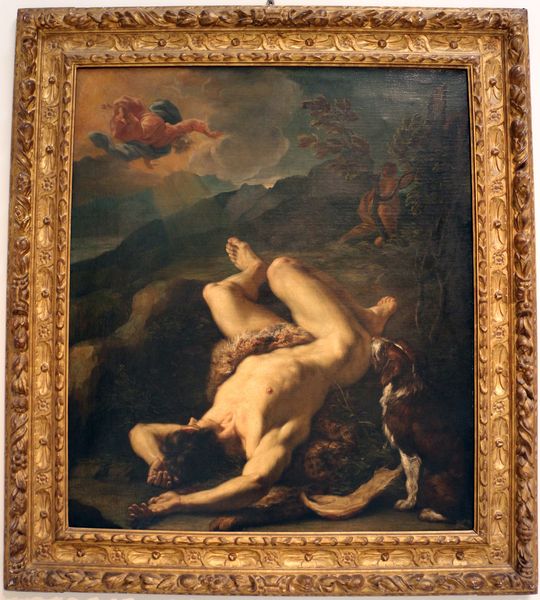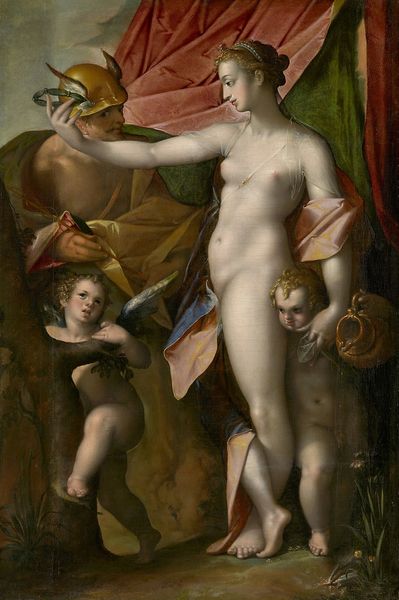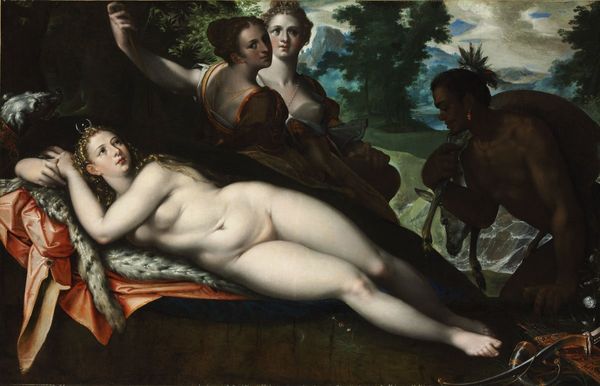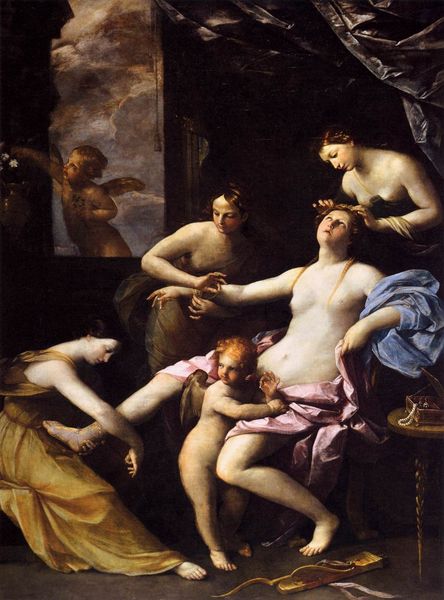
painting, oil-paint
#
venetian-painting
#
allegory
#
baroque
#
painting
#
oil-paint
#
landscape
#
figuration
#
oil painting
#
mythology
#
nude
Copyright: Public Domain: Artvee
Editor: This is "Diana and Her Dog," an oil on canvas painted by Sebastiano Ricci around 1717 to 1720. The goddess appears thoughtful and serene in a shadowy landscape with her loyal dog. It strikes me as an intimate, almost melancholic portrayal of a powerful figure. How do you interpret this work? Curator: That melancholic quality you observe is key. Think about Diana, the Roman goddess of the hunt, wilderness, and the moon. The moon, across cultures, has long held associations with cycles, mysteries, and a certain wistfulness. This scene, divested of dramatic action, invites contemplation. Note how her gaze is directed downwards, seemingly internal, away from us. Editor: Yes, her inward focus is palpable. Even her dog seems still, caught in her mood. Is there a reason for her subdued depiction? Curator: Precisely! While seemingly simple, the dog is also of symbolic weight, traditionally representative of loyalty and vigilance. So why is it seated quietly instead of actively hunting? The landscape itself contributes, as well, offering both safety and, also, some seclusion from others. Editor: You mean the goddess appears detached from her usual role? Curator: Potentially so! The dog acts as an important piece within this. By showing them seated and still with Diana staring off to her side in solitude, this gives us insight into a melancholic goddess perhaps ruminating about what the future will hold. There is tension between duty and desire in its overall feeling. Does that tension resonate for you? Editor: It certainly does now. I hadn’t considered how the symbols contributed to the complexity of her mood. Curator: Ultimately, Ricci captures a quiet moment of introspection, layering universal themes of power, duty, and introspection with timeless visual cues. Editor: I see it differently now. Thanks for sharing your insightful perspective!
Comments
No comments
Be the first to comment and join the conversation on the ultimate creative platform.
